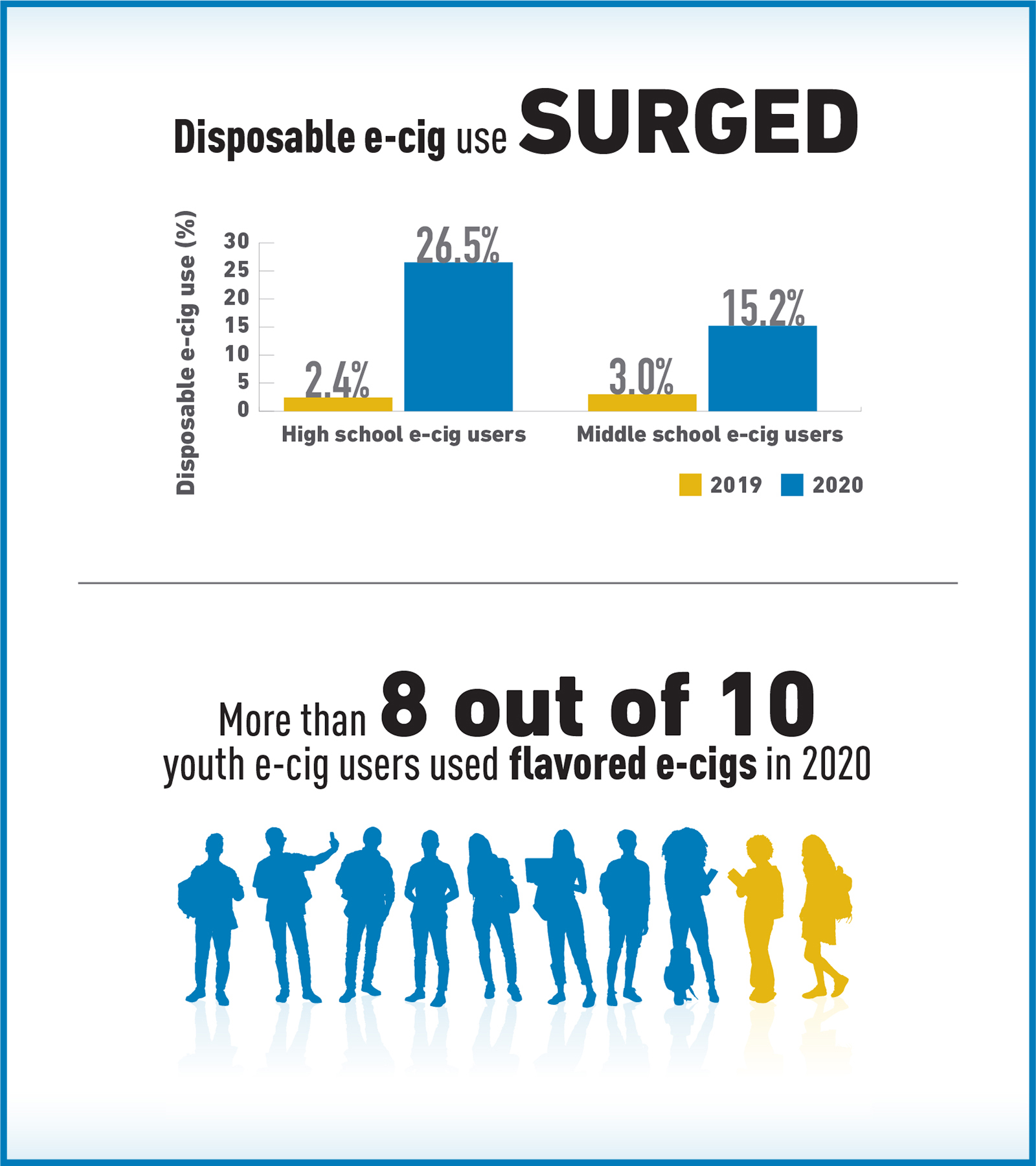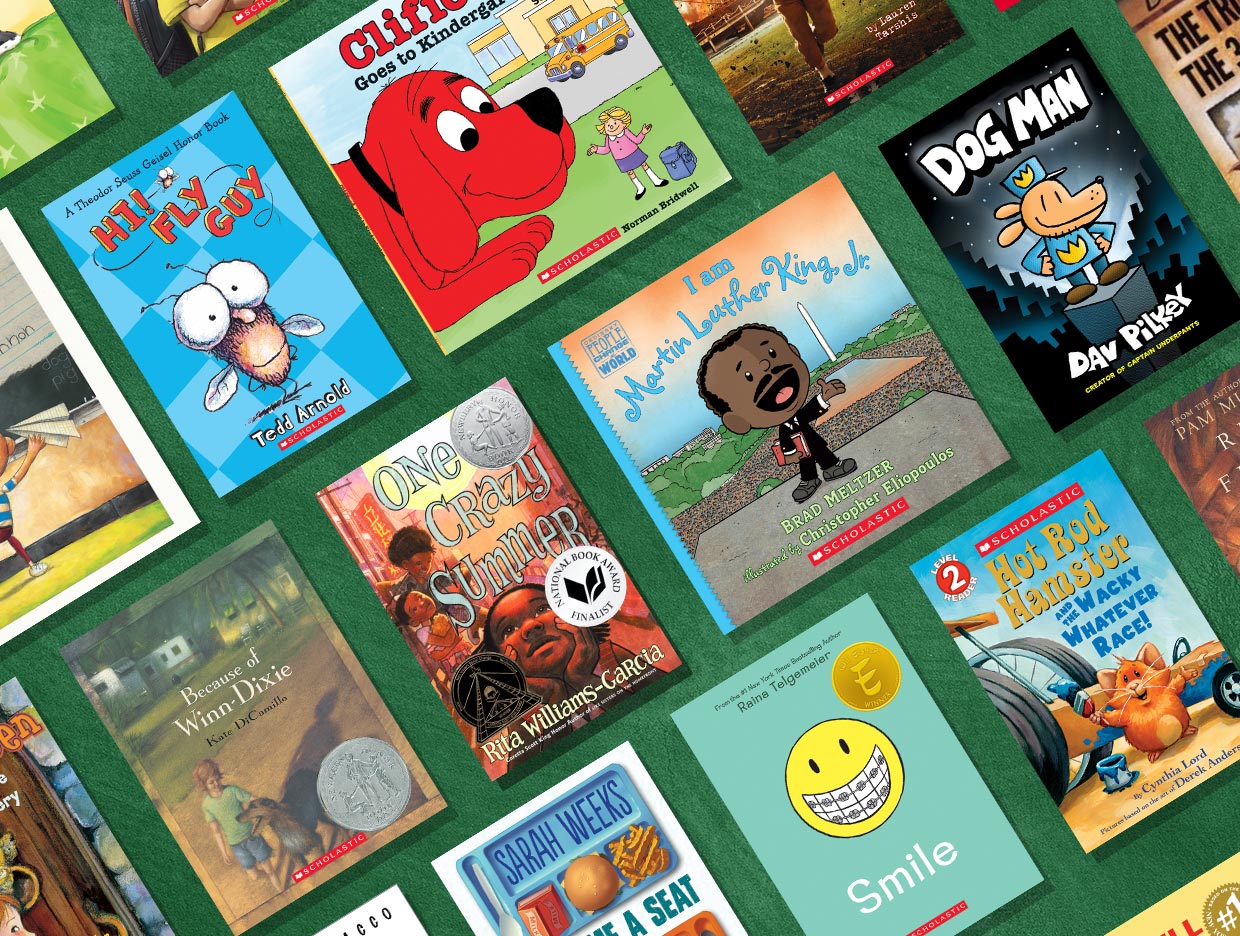Learn the Latest Facts About Teen E-Cigarette Use
Get insight into the latest statistics on e-cigarette usage amongst teens, as well as how to address this public health crisis.
Key Takeaways
- 1.8 million fewer youth used e-cigarettes in 2020 than in 2019, though there was an alarming uptick in youth use of disposable e-cigarettes.
- More than 8 out of 10 youth who used e-cigarettes were using products with flavors like fruit, mint, candy, and menthol.
- About 60 percent of youth said they’d seen someone use an e-cigarette in or around their school.
Let’s Start With Some Good News
I am happy to share a piece of good news: According to the latest National Youth Tobacco Survey (NYTS) results, 1.8 million fewer youth used e-cigarettes in 2020 compared to 2019.
In fact, youth use of e-cigarettes, cigars, and smokeless tobacco all decreased from 2019 to 2020, causing a significant decline in overall youth tobacco use.
We are encouraged to see these declines; however, 3.6 million teens using e-cigarettes is still too many. In 2020, about 20 percent of high schoolers and 5 percent of middle schoolers reported they had used e-cigarettes in the past 30 days, down from about 28 percent of high schoolers and 11 percent of middle schoolers in 2019. Though this is real progress, we still have a lot of work to do to protect children from a lifetime of nicotine addiction.
What Kinds of E-Cigarettes Are Teens Using?
The latest NYTS results show a concerning increase in youth use of disposable e-cigarettes, which are designed for a single use. Some of these disposable products cost as little as a few dollars each, making them more affordable to teens. A disposable e-cigarette can’t be recharged or refilled; teens can just obtain, use, and throw away these products. About 870,000 youth used disposable e-cigarettes in 2020, which was a large increase from 2019.
NYTS also documents the types of e-cigarettes that were most frequently used by young people. The research shows that 8 in 10 teens who used e-cigarettes were using products with flavors like fruit, mint, candy and menthol. Flavored e-cigarettes often look like brightly colored USB sticks—so you may want to be on the lookout in your classroom and school.
What Do We Know About Teens Using E-Cigarettes at School?
Youth believe that e-cigarette use is common among their peers. In 2020, about 60 percent of youth said they’d seen someone use an e-cigarette in or around their school. Teens also shared where they saw this happening:
- In a bathroom or locker room (38 percent)
- Outdoors on school grounds (35 percent)
- Inside a classroom (23 percent)
- Some other indoor area (20 percent)
Where Do We Go From Here?
Teens can be very responsive to facts about e-cigarettes. These interactive lesson plans on e-cigarette health risks for middle and high school provide informational content tailored for classroom and remote learning in English and Spanish. You can also use these resources to deepen your knowledge before having an important conversation with a teen about e-cigarettes. Please also consider including free quit resources in your school’s e-cigarette response policies, as students who use in school may be struggling with addiction.
FDA is working hard to take action against illegal e-cigarette products that appeal to, and are accessible to, our children. In early 2020, we issued a policy prioritizing enforcement against flavored, cartridge-based e-cigarettes, such as certain flavored versions of the popular Juul brand product. In response to the recent uptick in youth use of disposable e-cigarettes, we’ve notified several manufacturers, including the makers of Puff Bar, to remove their products from the U.S. market. Also, e-cigarette makers recently had to meet a critical September 9, 2020 deadline to submit scientific applications to FDA. We are diligently evaluating these applications and will only authorize e-cigarettes to stay on the U.S. market if the science proves that their sale is appropriate for the protection of public health. To determine this, FDA considers the risks and benefits to the U.S. population as a whole, including users and nonusers. Might current users of more deadly tobacco products switch to these products? Would the sale of these products cause current nonusers to start using tobacco? In addition to evaluating scientific applications, FDA will continue to enforce the new minimum age of 21 to purchase tobacco products.
The combination of all these efforts and factors may have contributed to this year’s decline in youth tobacco use, but with 3.6 million teens still using e-cigarettes, our work to protect young people from these highly addictive products is not done. FDA will continue to use all of the tools in our regulatory toolbox to address the public health crisis of youth e-cigarette use.
—Kathy Crosby is the Director of Communications at FDA’s Center for Tobacco Products. Learn more at www.fda.gov.





